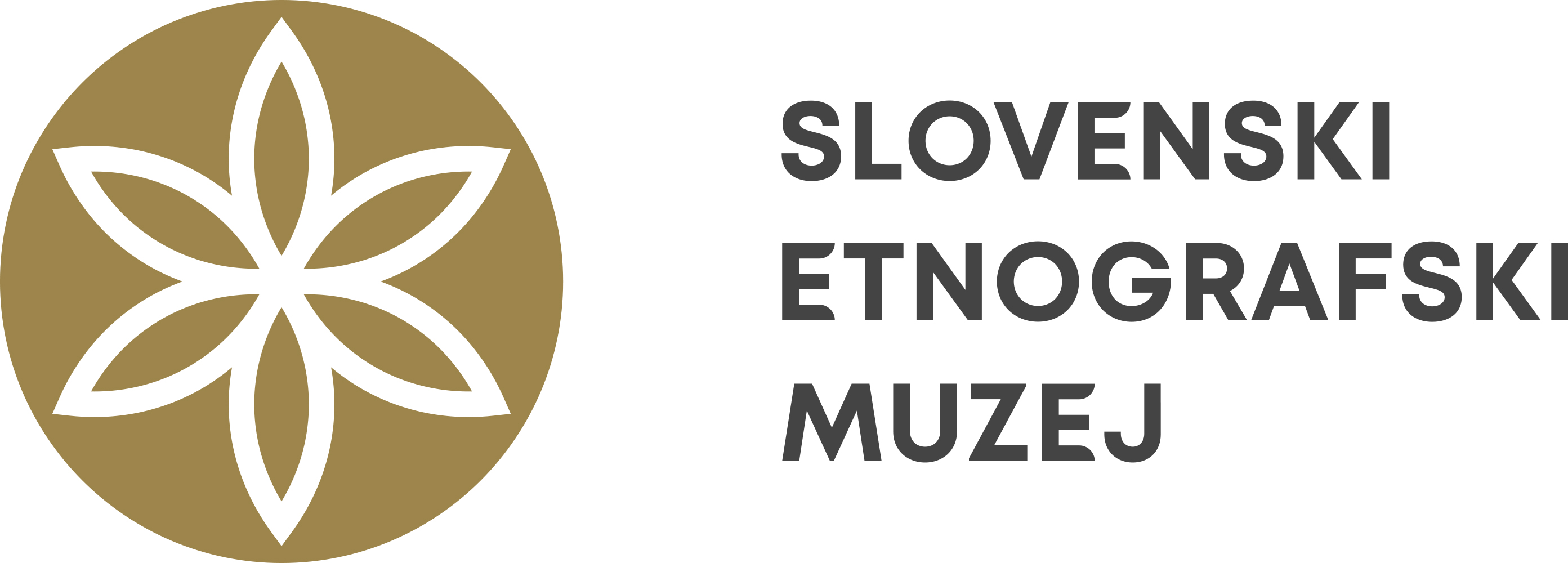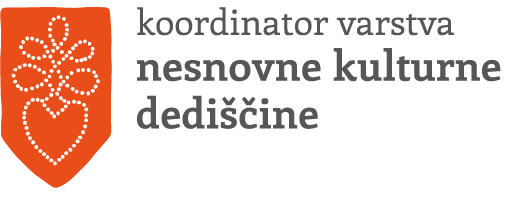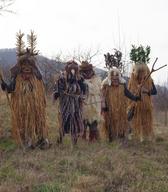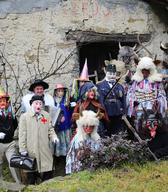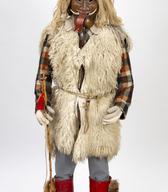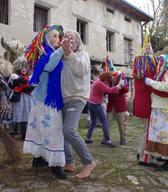Lig Carnival
For the forth year in a row, the Slovene Ethnographic Museum presents carnival characters whose masks and outfits the museum bought last year for its museum collection. This year, the Lig carnival will be presented at the temporary exhibition. In 2020, Lig Carnival was entered in the Register of Intangible Cultural Heritage.
The exhibition presents the carnival custom, which represents a wedding parade. It takes place in the Kanal Kolovrat area during Shrovetide. In addition to photographs of the Lig Carnival, 6 complete carnival figures are exhibited: the Beautiful ones, Gendarme, the Carnival (Pust), Pustica with a birch broom from the collection of the Slovene Ethnographic Museum and the Ramašton from the collection of the Ethnological Society Liški pustjé. From the extensive collection of Branko Žnidarčič 4 facial masks from the 1940s are on display. The exhibition is accompanied by a short video about making masks and carnival tours of the villages.
There are three groups of Lig Carnival figures: the ‘beautiful ones’, the ‘ugly ones’, the copper masks. During Lig Carnival there is a parade that goes from house to house in the villages of Markiči, Bajti, Ukanje, Britof, Strmec, Lovišče, Melinki, accompanied by accordion music (like a wedding). The ‘ugly ones’ run around the whole time, chasing youngsters, making fun, ringing bells and making noise to drive away everything bad. When they get to a house, the first one to enter are the ‘beautiful ones’, who represent everything good: order (gendarme), health (doctor) and fertility (newlyweds). They greet everyone and dance. The hosts give them something to eat and drink, as well as gifts. They can then be followed into the house by the ‘ugly ones’ and the copper masks.
The history of carnival rounds in this area goes back to before the First World War, but in Fascist times carnival celebrations were forbidden. The tradition was revived in 1947, only to fade way again in the 1970s. In the 1980s Branko Žnidarčič began to make carnival masks based on childhood memories and these have been preserved until today. One special characteristic of the masks is the material used: before the First World War the face masks worn by the ‘beautiful ones’ and ‘ugly ones’ were forged from copper, but today they are made of aluminium. Only ramašton, ramauš, bajar and braja still wear a copper mask.
The members of the Liški pust Ethnological Society take care of the carnival heritage of these villages and thus strengthen the local identity. Preparations for carnival time involves a careful check of all the clothes and masks, repairing what needs to be prepared or making new items where necessary. Until the spring of 2021 the main driving force and president of the society was the mask maker Branko Žnidarčič, who selflessly transferred his knowledge to the younger generation, so that after his death they can carry on the custom of Lig Carnival.
Exhibition curator and author: mag. Adela Pukl
Professional collaborators: mag. Anja Jerin, Dejan Žnidarčič



